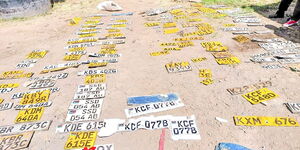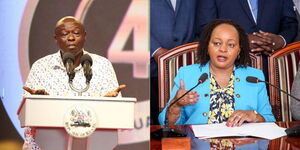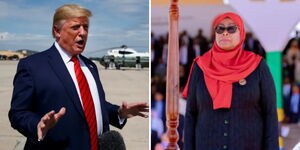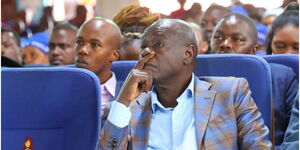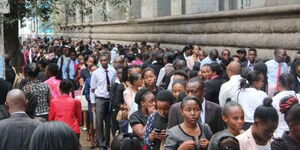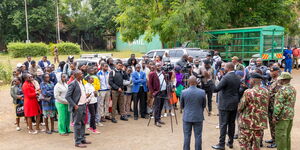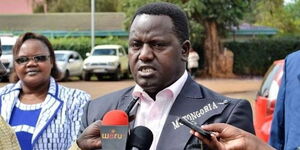A central pillar of Kenya's democracy, the Independent Electoral and Boundaries Commission (IEBC) is a body often misunderstood yet perpetually under the microscope. Tasked with the monumental responsibility of delivering free, fair, and credible elections, its structure, processes, and independence are under constant scrutiny. But what exactly is its anatomy, how is it designed to navigate the complexities of electoral management, and what are the crucial tasks that define its mission?
The IEBC's very genesis lies in a painful chapter of Kenya's history. Established on November 9, 2011, through the provisions of the 2010 Constitution (Article 88) and the IEBC Act, 2011, it emerged from the ashes of past electoral controversies. It specifically replaced the Interim Independent Electoral Commission (IIEC), which itself was a transitional body formed after the widespread dissatisfaction and violence that followed the disputed 2007 General Election. The formation of the IEBC was, therefore, a cornerstone reform, designed to instill independence and restore public confidence in Kenya's electoral processes.
At its core, the IEBC's mandate is comprehensive, spanning the entire electoral cycle. From the initial stages of voter registration to the final tallying of results, the Commission is constitutionally empowered to oversee every aspect. Its key functions include the continuous registration of voters, the critical task of delimiting electoral boundaries, regulating the intricate affairs of political parties, settling pre-election disputes, and meticulously registering candidates vying for various elective offices.
Beyond the mechanics of voting, the IEBC is also charged with public voter education, facilitating election observation, enforcing campaign finance regulations, and upholding a robust electoral code of conduct.
The decision-making and oversight body of the IEBC comprises a Chairperson and six Commissioners. These individuals are selected through a rigorous, public recruitment process conducted by an independent IEBC Selection Panel, ensuring a degree of transparency in their appointment. The current team is led by Chairperson Erastus Ethekon, who recently took over the mantle, inheriting a role previously held by figures like the late Wafula Chebukati, whose tenure was marked by immense pressure and significant legal battles.
Chairperson Ethekon, alongside Commissioners Ann Njeri Nderitu, Moses Alutalala Mukhwana, Mary Karen Sorobit, Hassan Noor Hassan, Francis Odhiambo Aduol, and Fahima Araphat Abdallah, were sworn into office recently. Their non-renewable six-year term immediately thrust them into the heart of Kenya's political landscape, with their most immediate and significant challenge being the oversight of the upcoming 2027 General Election.
This reality was not lost on Ethekon, whose first words after his swearing-in underscored his commitment: "My first loyalty is to Kenyans," he affirmed, pledging to ensure a peaceful and credible electoral process.
Critical to the delivery of fair elections are two particularly complex and often contentious functions: voter registration and electoral boundary delimitation. The IEBC is responsible for maintaining a clean and accurate voters' register through continuous registration, as well as periodic cleanups. This ongoing process involves removing deceased voters, correcting erroneous entries, and updating voter details to reflect changes in residence or status, all aimed at safeguarding the principle of "one person, one vote."
IEBC & Voter Registration
Voter registration is a multi-faceted process carried out at various gazetted centers across the country. These include permanent IEBC county and constituency offices, temporary registration centers deployed during mass registration drives, and even integrated service points like Huduma Centres. For Kenyans living abroad, the process extends to selected Kenyan missions, ensuring diaspora participation.
At the heart of this process is the Biometric Voter Registration (BVR) system, which captures an applicant's alphanumeric data alongside unique biometric features such as fingerprints and facial images, which are then used for verification.
Upon successful registration, applicants receive a laminated acknowledgement slip as proof of their entry into the system. This slip, while not a requirement for voting itself, confirms their registration status and the polling station where they are expected to cast their ballot.
Following any major registration drive, the IEBC publishes a provisional voter register, allowing citizens a crucial period to verify their details online or physically. This verification window also serves as an opportunity for the public to raise objections to any incorrect entries, ensuring the final register used on election day is as accurate and transparent as possible.
IEBC & Boundary Review
Beyond voter registration, the IEBC's mandate includes the intricate and often politically charged process of electoral boundary review, commonly known as delimitation. The core purpose of this exercise is to define or redefine the geographical limits of constituencies, which elect Members of the National Assembly, and county assembly wards, which elect Members of County Assemblies. This function is vital for ensuring equitable representation across the diverse regions of Kenya.
The Constitution provides clear directives for these reviews. Constituencies, currently fixed at 290, must be reviewed at intervals of not less than eight years and not more than twelve years. The last delimitation was done in 2012.
Crucially, any changes must be completed and gazetted at least twelve months before a general election to prevent disruptions and ensure stability. However, with less than three years remaining until the 2027 polls, the clock is ticking for the IEBC to embark on and conclude any meaningful adjustments to the current boundaries.
The boundary delimitation process relies heavily on the latest enumerated national census figures, such as the 2019 data, which forms the primary basis for determining the "population quota." This quota is calculated by dividing Kenya's total population by the fixed number of constituencies (290) or the determined number of wards, providing an average population size for each electoral unit.
While population is key, the Constitution allows for strategic deviations: cities and sparsely populated areas can deviate by up to 40 percent from the average, while other areas are permitted a 30 percent variance.
Beyond numerical quotas, the IEBC considers several qualitative factors during delimitation. These include geographical features like mountains or rivers, the distinction between urban and rural areas, the preservation of "communities of interest" (shared cultural, historical, or economic ties), and the existing means of communication and infrastructure. Based on this comprehensive data analysis, the IEBC prepares a preliminary report outlining proposed new names and boundaries, indicating potential mergers, splits, or significant alterations to existing units.
A crucial stage in this process is public participation. The IEBC is constitutionally mandated to notify the public of the review and publish the preliminary report for a minimum of 30 days. During this period, extensive public hearings are conducted nationwide, allowing individuals, community groups, civil society organizations, and political parties to submit memoranda and make oral representations.
Following public input, the IEBC reviews all submissions and makes necessary revisions to its preliminary report within a specified timeframe, typically 14 days. The revised report is then submitted to the relevant Parliamentary Committee for its advisory recommendations. It is important to emphasize that while Parliament offers input, the ultimate and final decision on boundary delimitation rests squarely with the IEBC.
The final report, detailing the new boundaries, is subsequently published in the Kenya Gazette, though the new boundaries only formally take effect upon the dissolution of Parliament following their gazettment.
The IEBC Secretariat
Underpinning the entire operational framework of the IEBC is its professional Secretariat, headed by the Chief Executive Officer (CEO), currently Marjan Hussein Marjan. This administrative and technical arm, comprising nine Directorates, 17 departments, two Deputy Commission Secretaries, and a vast network of County Election Managers (CEMs) and Constituency Election Coordinators (CECs), is the engine that translates the Commissioners' policies into action.
The Secretariat manages all day-to-day operations, including procurement, logistics, human resources, and the deployment of electoral materials and personnel. During general elections, the CEO serves as the National Returning Officer for the Presidential Election, with CEMs and CECs acting as Returning Officers for their respective regions.
All things considered, the IEBC, through its policy-setting Commissioners and the diligent execution of its Secretariat, is the lynchpin for ensuring that Kenya's elections are conducted professionally, transparently, and credibly, reflecting the will of its people.

